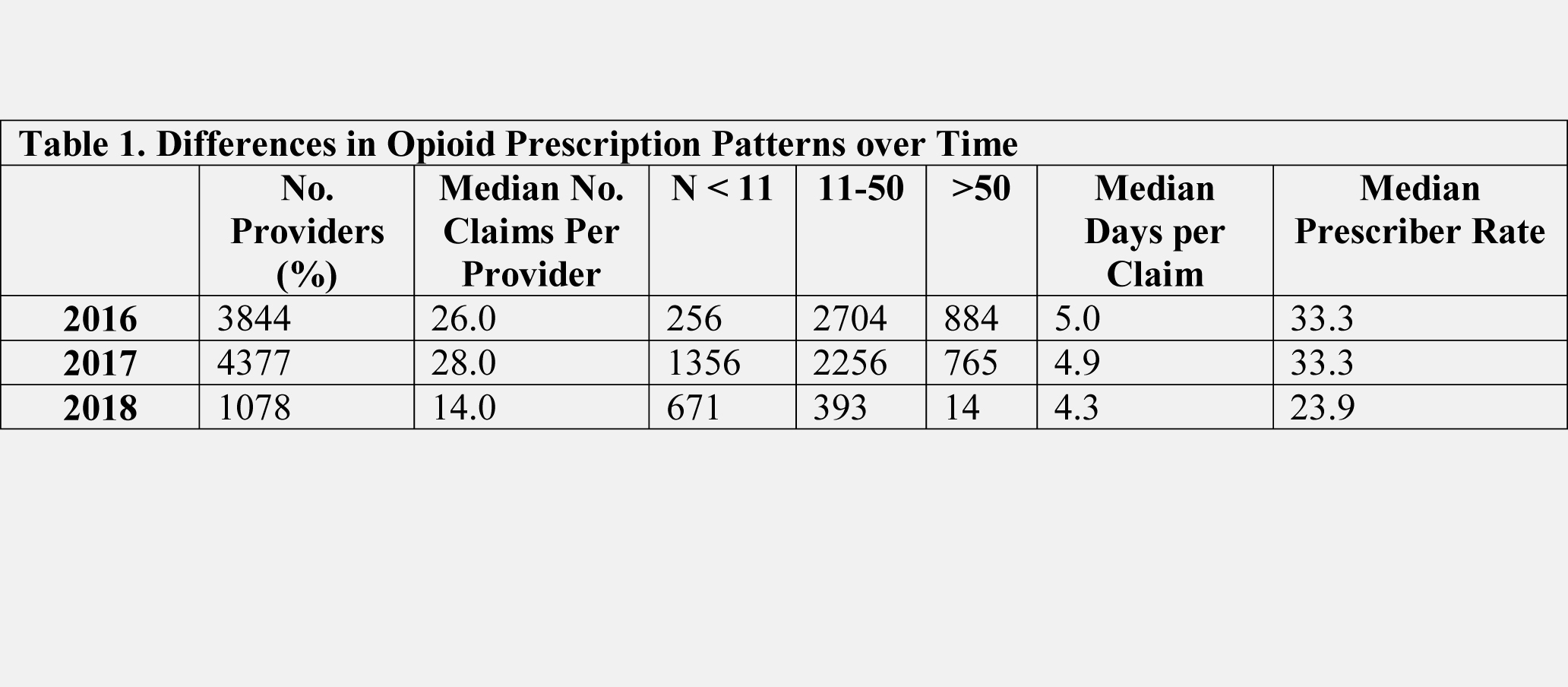Are Opioids Out? Assessing Prescription Patterns in Plastic Surgery Utilizing Medicare Part D Beneficiary Data
Rose S. Maisner, BS, Amy Song, BS, Benjamin Zhou, BS, Nivetha Srinivasan, BS, Parisorn Thepmankorn, BS, Claudia Siniakowicz, BS, Haripriya S. Ayyala, MD
Division of Plastic and Reconstructive Surgery, Rutgers-New Jersey Medical School, Newark, NJ
BACKGROUND: Since 1999, over 750,000 individuals have passed away due to opioid overdose, 31% of which involved prescription opioids. Use of opioids for postoperative pain lacks evidence-based guidelines and are routinely prescribed despite studies showing the efficacy of non-opioid agents in reducing postoperative morbidity. The authors sought to investigate recent opioid prescription patterns among plastic surgeons.
METHODS: This cross-sectional study utilized “Medicare Provider Utilization and Payment Data: Part D Prescriber” provided by the Centers for Medicare and Medicaid Services from 2016-2018. Entries were filtered to include plastic surgeons with MD, DO, MBBS, or MB BCh degrees. Outcomes include total opioid claim counts (including refills), opioid prescriber rate (percent of total prescriptions that were for opioids), and days per claim, calculated as opioid day supply divided by total opioid claims. Kruskal-Wallis tests were used to compare plastic surgeons' prescription patterns between 2016, 2017, and 2018, as well as compare outcomes between surgeons practicing in different geographic regions (?=0.05).
RESULTS: From 2016-2018, plastic surgeons wrote 289,525 opioid prescriptions for 1,729,523 days (6.0 days per prescription), totaling $3,346,979.39. In 2018, 62.2% of plastic surgeons prescribed 0-10 opioids, 36.5% prescribed 11-50 opioids, and 1.3% prescribed over 50. 99.9% of plastic surgeons prescribing opioids are practicing in metropolitan areas (RUCA codes 1-3). Plastic surgeons from the Northeast had significantly less total opioid claims (p=0.008), prescriber rates (p

Back to 2021 Posters
